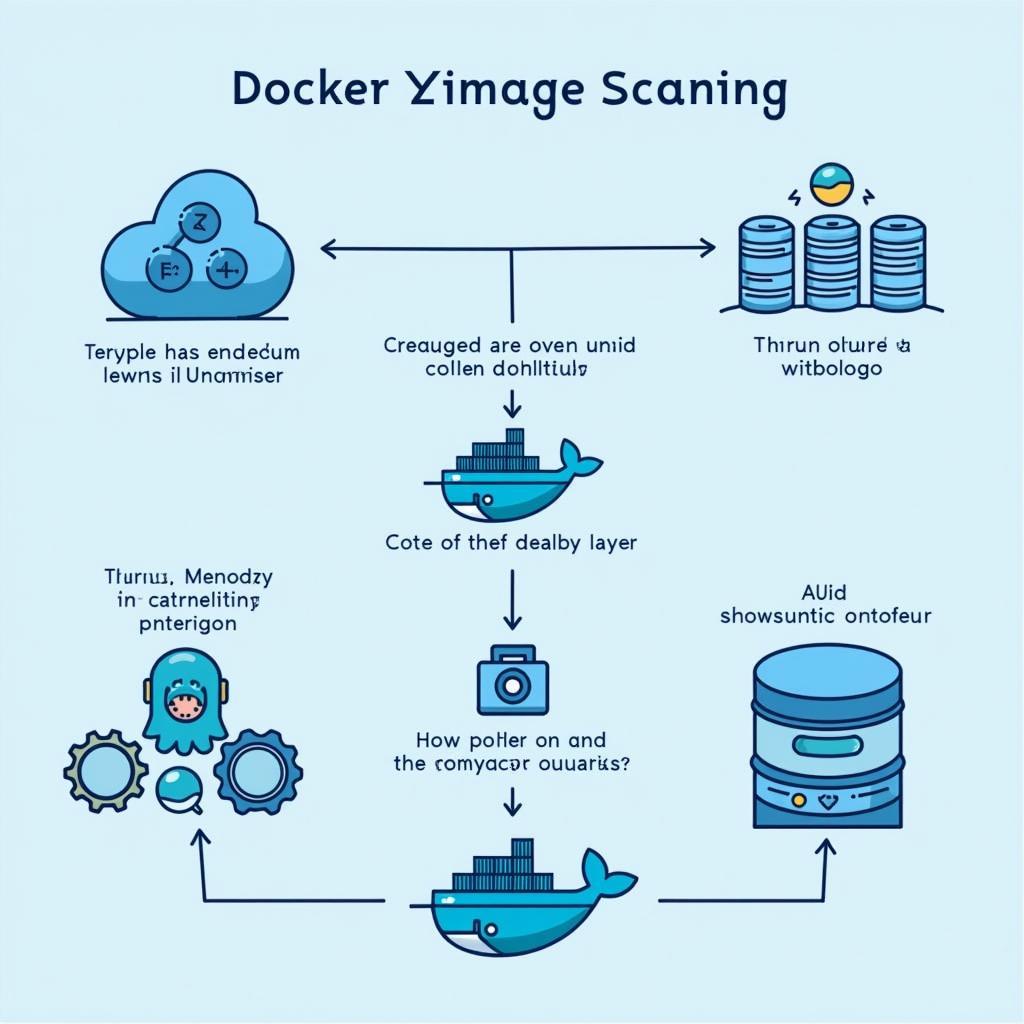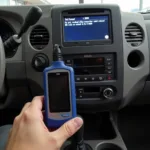Docker image vulnerability scanning tools are essential for maintaining the security of your containerized applications. These tools help identify known vulnerabilities within your Docker images, allowing you to address them before they can be exploited. This is crucial in today’s environment where containerization is widely adopted.
Choosing the right docker scanning tools can significantly impact your security posture. Factors like ease of integration, comprehensive vulnerability databases, and reporting capabilities are all important considerations. This guide explores the complexities of docker image vulnerability scanning, provides insights into various tools, and offers best practices for securing your containerized environments.
Understanding Docker Image Vulnerability Scanning
Docker image vulnerability scanning is the process of analyzing your Docker images for known security flaws. This involves checking the image layers against vulnerability databases, identifying outdated packages, and highlighting potential misconfigurations. By proactively scanning your images, you can minimize the risk of security breaches and maintain a robust security posture.
Why is Docker Image Vulnerability Scanning Important?
Ignoring vulnerabilities in your Docker images can have severe consequences, including data breaches, system compromise, and reputational damage. Regular scanning allows you to:
- Identify and mitigate vulnerabilities early: Catch security flaws before they reach production.
- Reduce attack surface: Strengthen your defenses by addressing known weaknesses.
- Improve compliance: Meet industry regulations and security standards.
- Enhance overall security posture: Build a more secure and resilient containerized environment.
Choosing the Right Docker Image Vulnerability Scanning Tool
There’s a wide range of container scanning tool available, each with its own strengths and weaknesses. When choosing a tool, consider the following factors:
- Accuracy and comprehensiveness of the vulnerability database: The tool should have access to an up-to-date and comprehensive vulnerability database.
- Integration with your CI/CD pipeline: Seamless integration with your existing workflow streamlines the scanning process.
- Reporting and alerting capabilities: Clear and concise reports help prioritize and address vulnerabilities effectively.
- Ease of use and deployment: The tool should be easy to set up and use, even for those new to container security.
- Support for multiple container registries: Ensure the tool supports the registries you use, such as Docker Hub, AWS ECR, and Google Container Registry.
 Docker Image Vulnerability Scanning Process
Docker Image Vulnerability Scanning Process
Popular Docker Image Vulnerability Scanning Tools
Several gitlab security scanning tools are commonly used for Docker image vulnerability scanning. Some popular options include:
- Clair: An open-source project that provides static analysis of vulnerabilities in Docker and appc images.
- Anchore Engine: A comprehensive platform for container inspection and analysis, offering vulnerability scanning, policy enforcement, and compliance checks.
- Trivy: A simple and comprehensive vulnerability scanner for containers, suitable for both CLI and CI/CD integration.
- Snyk: A developer-first security platform that integrates with your development workflow to find and fix vulnerabilities in your code, open source dependencies, and containers.
Comparing Open-Source Tools
A comprehensive docker container scanning open source tool comparison blog is an invaluable resource for choosing the right tool. This type of comparison allows you to see the strengths and weaknesses of each option side-by-side.
Best Practices for Docker Image Vulnerability Scanning
Implementing effective Docker image vulnerability scanning requires more than just choosing the right tool. Here are some best practices to follow:
- Scan early and often: Integrate vulnerability scanning into your CI/CD pipeline to catch vulnerabilities as early as possible.
- Use minimal base images: Start with a minimal base image to reduce the attack surface.
- Regularly update your images: Keep your base images and application dependencies up to date to patch known vulnerabilities.
- Implement security policies: Define and enforce security policies to ensure consistent security practices.
- Monitor and respond to alerts: Actively monitor scan results and respond to alerts promptly.
“Regularly scanning your images is paramount,” says John Smith, Lead Security Engineer at SecureContainers Inc. “It’s the first line of defense in protecting your containerized applications.”
Aqua: A Comprehensive Solution
The aqua image scanning tool offers robust and comprehensive image scanning capabilities, helping you identify and mitigate vulnerabilities effectively.
Conclusion
Docker image vulnerability scanning tools are critical for maintaining a secure containerized environment. By choosing the right tool and following best practices, you can proactively identify and address vulnerabilities, reducing the risk of security breaches and improving your overall security posture. Remember to scan early and often to stay ahead of potential threats. Docker image vulnerability scanning is not a one-time task, but an ongoing process that requires continuous attention and improvement.
“Don’t just scan, act,” advises Jane Doe, Senior Security Consultant at ContainerSec Solutions. “Remediating vulnerabilities promptly is key to minimizing risk.”
FAQ
-
What are docker image vulnerability scanning tools?
Docker image vulnerability scanning tools are applications that analyze Docker images for known security flaws. -
Why is docker image vulnerability scanning important?
Scanning helps identify and mitigate vulnerabilities early, reducing the attack surface and improving compliance. -
How often should I scan my Docker images?
Ideally, you should scan your images as part of your CI/CD pipeline, every time you build a new image. -
What are some popular docker image vulnerability scanning tools?
Popular tools include Clair, Anchore Engine, Trivy, and Snyk. -
What should I consider when choosing a scanning tool?
Consider the vulnerability database, CI/CD integration, reporting capabilities, ease of use, and support for multiple registries. -
What are some best practices for Docker image vulnerability scanning?
Scan early and often, use minimal base images, regularly update your images, implement security policies, and monitor alerts. -
How can I learn more about Docker security best practices?
Many resources, including online documentation and security blogs, offer in-depth information on Docker security.
Need help? Contact us via WhatsApp: +1(641)206-8880, Email: [email protected] or visit us at 276 Reock St, City of Orange, NJ 07050, United States. We offer 24/7 customer support.

